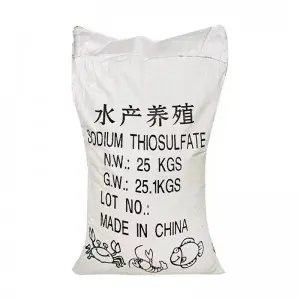



Understanding the Safety and Handling of Sodium Hydroxide in Personal Protective Equipment
Understanding Sodium Hydroxide and Its Personal Protective Equipment (PPE) Requirements
Sodium hydroxide, commonly known as lye or caustic soda, is a highly versatile chemical that is widely used across various industries. It is most notably applied in the manufacturing of soap, textiles, paper, and cleansing agents. Though its applications are numerous, sodium hydroxide is classified as a strong alkaline substance with significant corrosive properties. Hence, it poses various health and safety risks to workers who handle it. This highlights the necessity for proper Personal Protective Equipment (PPE) to safeguard individuals from potential hazards associated with sodium hydroxide.
Properties and Hazards of Sodium Hydroxide
Sodium hydroxide is a white solid that appears as flakes, granules, or pellets. It is highly soluble in water, releasing considerable heat when dissolved. The compound can cause severe chemical burns upon contact with skin, and its fumes can irritate the respiratory tract. Moreover, sodium hydroxide can lead to serious eye injuries if it comes into contact with the eyes, potentially resulting in permanent damage or vision loss.
The ability to rapidly neutralize acids makes sodium hydroxide a valuable industrial substance, but this same property can make it particularly hazardous. The risk of accidental spills and splashes in industrial settings necessitates heightened awareness and stringent practices during handling.
Importance of Personal Protective Equipment (PPE)
The utilization of appropriate PPE is crucial for minimizing the risks associated with sodium hydroxide exposure. The following are essential types of PPE that workers should consider when dealing with sodium hydroxide
1. Eye Protection Safety goggles or face shields are critical to protect against splashes that could occur during the handling, mixing, or transferring of sodium hydroxide. It’s crucial that eye protection complies with the ANSI Z87.1 standard to ensure adequate safety.
2. Skin Protection Corrosion-resistant gloves made from rubber, neoprene, or PVC should be worn at all times when handling sodium hydroxide. These materials provide a barrier to prevent skin absorption of the chemical, which can lead to serious health issues. It is advisable to wear long-sleeved chemical-resistant clothing to cover the skin fully.
sodium hydroxide ppe

3. Respiratory Protection In scenarios where sodium hydroxide dust or vapors may be present, suitable respiratory devices should be used. This could include N95 respirators or more advanced respirators depending on the concentration of exposure. Evaluating the exposure levels in the working environment is key to determining the appropriate respiratory protection.
4. Foot Protection Safety boots resistant to chemical exposure are also recommended. Steel-toed boots can protect against accidental drops of sodium hydroxide containers.
5. Emergency Equipment Workplaces should be equipped with emergency showers, eyewash stations, and proper first aid kits. In the event of exposure, immediate action is critical to mitigate harm.
Training and Safety Protocols
In addition to providing PPE, it is vital that employers implement comprehensive training programs for workers handling sodium hydroxide. Understanding the proper handling techniques, recognizing exposure symptoms, and knowing the emergency procedures can drastically reduce the risks associated with this chemical.
Workers should be familiar with the Material Safety Data Sheet (MSDS) for sodium hydroxide, which outlines the chemical’s properties, hazards, safe handling practices, and first-aid measures. Regular safety drills and refresher courses can enhance awareness and preparedness.
Conclusion
While sodium hydroxide is an invaluable resource across various sectors, its corrosive nature demands strict adherence to safety protocols and the use of appropriate PPE. The right protective gear and training can protect workers from the inherent risks of handling this chemical. As industries continue to utilize sodium hydroxide, maintaining a focus on occupational health and safety will be vital to ensuring a safe working environment. By prioritizing effective PPE and rigorous training, businesses can not only comply with safety regulations but also foster a culture of safety that values the health and well-being of every worker.
-
Why Sodium Persulfate Is Everywhere NowNewsJul.07,2025
-
Why Polyacrylamide Is in High DemandNewsJul.07,2025
-
Understanding Paint Chemicals and Their ApplicationsNewsJul.07,2025
-
Smart Use Of Mining ChemicalsNewsJul.07,2025
-
Practical Uses of Potassium MonopersulfateNewsJul.07,2025
-
Agrochemicals In Real FarmingNewsJul.07,2025
-
Sodium Chlorite Hot UsesNewsJul.01,2025










